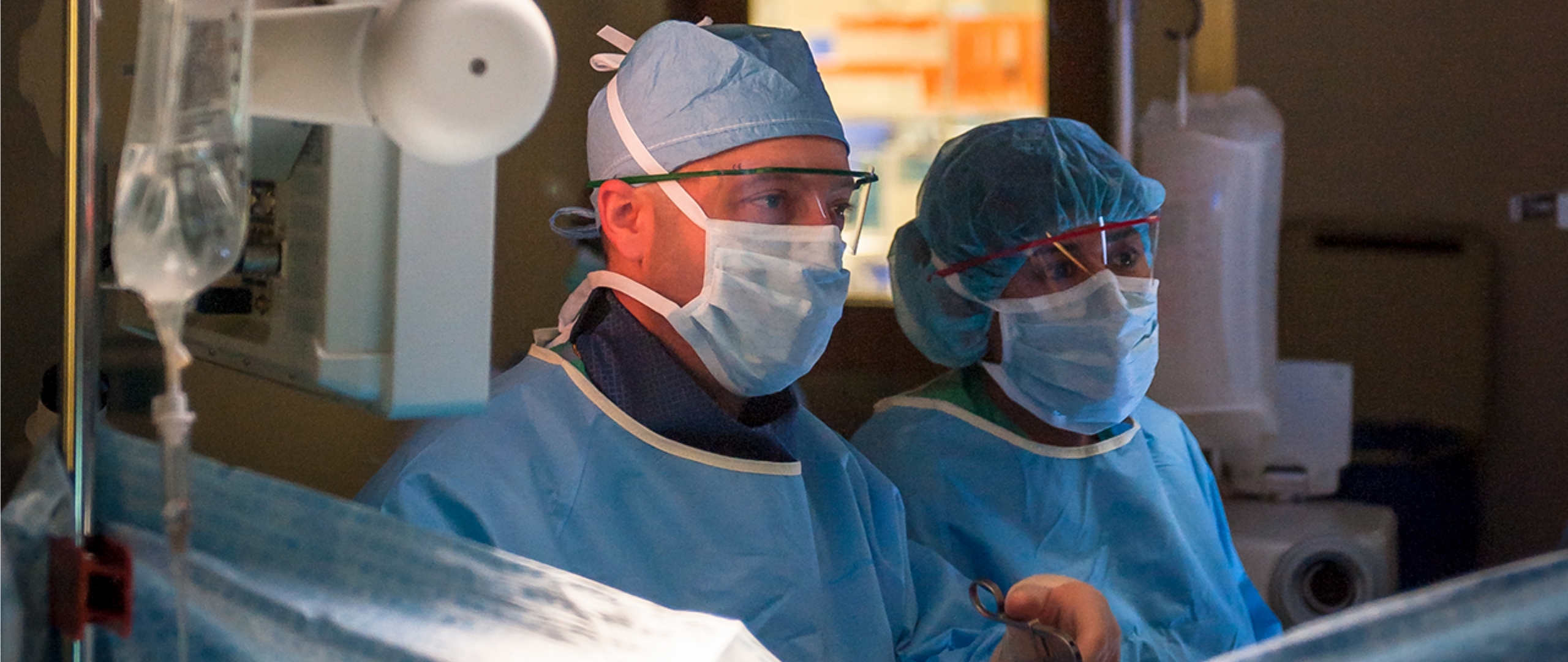Presbyterian Heart & Vascular Care Providers
Our team of highly skilled doctors and clinicians offers a full range of heart-related services from diagnosis and treatment to monitoring.

We have a highly skilled team who can provide a wide range of services from diagnosis to treatment.
If you have carotid artery disease (CAD), your doctor might want to insert a stent (wire mesh tube) into your carotid artery to widen it so blood flows more easily through it. But in doing so, plaque and other debris from the artery may come loose and travel to your brain. That raises the risk of a stroke.
A new procedure called TCAR provides a neuroprotection system (NPS) that reverses your blood flow so debris is captured in a filter before it reaches your brain.
This procedure is performed through a small incision at the neckline. The surgeon places a tube into the carotid artery and connects it to the NPS. The NPS directs blood flow from the brain while putting in the stent.
Presbyterian Heart and Vascular Care has a skilled vascular care team who can provide a wide range of services from diagnosis to treatment. Their surgeons are trained in many different techniques and procedures, many of which can provide you with a shorter recovery period and less hospital time.
Your doctor may recommend TCAR if:
TCAR is used to treat carotid artery disease (CAD), also called carotid artery stenosis. CAD happens when the carotid arteries, the vessels that carry blood to the brain, become narrower.
Fatty substances, known as plaque, can stick to the linings inside the arteries. This limits blood flow to the rest of your body, a condition called stenosis. Stenosis can lead to stroke.
Before the procedure:
The TCAR procedure takes place in an operating room. Your doctor will give you local or general anesthesia. Local anesthesia means you will be awake during the procedure. General anesthesia means you will be asleep.
Your surgeon makes a small opening at your neckline just above your clavicle. They place a tube directly into your carotid artery and connect it to a system that will direct blood flow away from your brain. This prevents loose plaque from reaching your brain.
Your blood will flow through the system. Any material captured will go to a filter outside of your body. The filtered blood will then be returned through a second tube in your upper leg.
A carotid stent is then put into your carotid arteries. Flow reversal is turned off and the blood flows back in the normal direction.
Patients who have the TCAR procedure get better quickly, usually spending one night in the hospital.
Your doctor may advise you to avoid exercise and activities like lifting for at least a week. You will be told when you can go back to your normal activity.
Your doctor may also prescribe medications for you to take to prevent blood clots from forming in your newly opened artery.
Your progress will be monitored closely. An ultrasound will be performed to determine if any narrowing has occurred in the stented artery.
To reduce the chance of blockage coming back in your artery, you may be encouraged to make lifestyle changes such as eating a healthier diet and doing more regular exercise.
Our team of highly skilled doctors and clinicians offers a full range of heart-related services from diagnosis and treatment to monitoring.